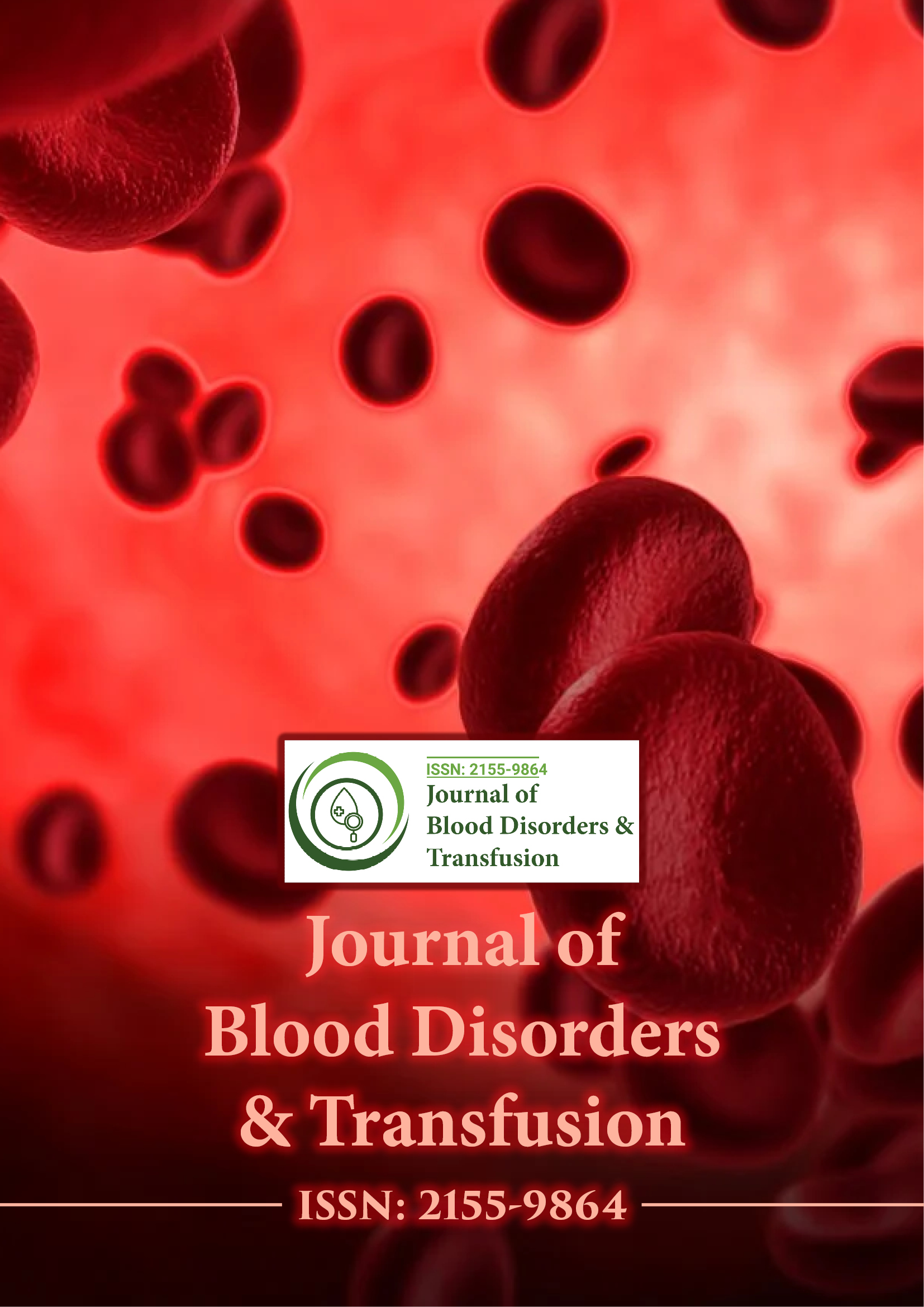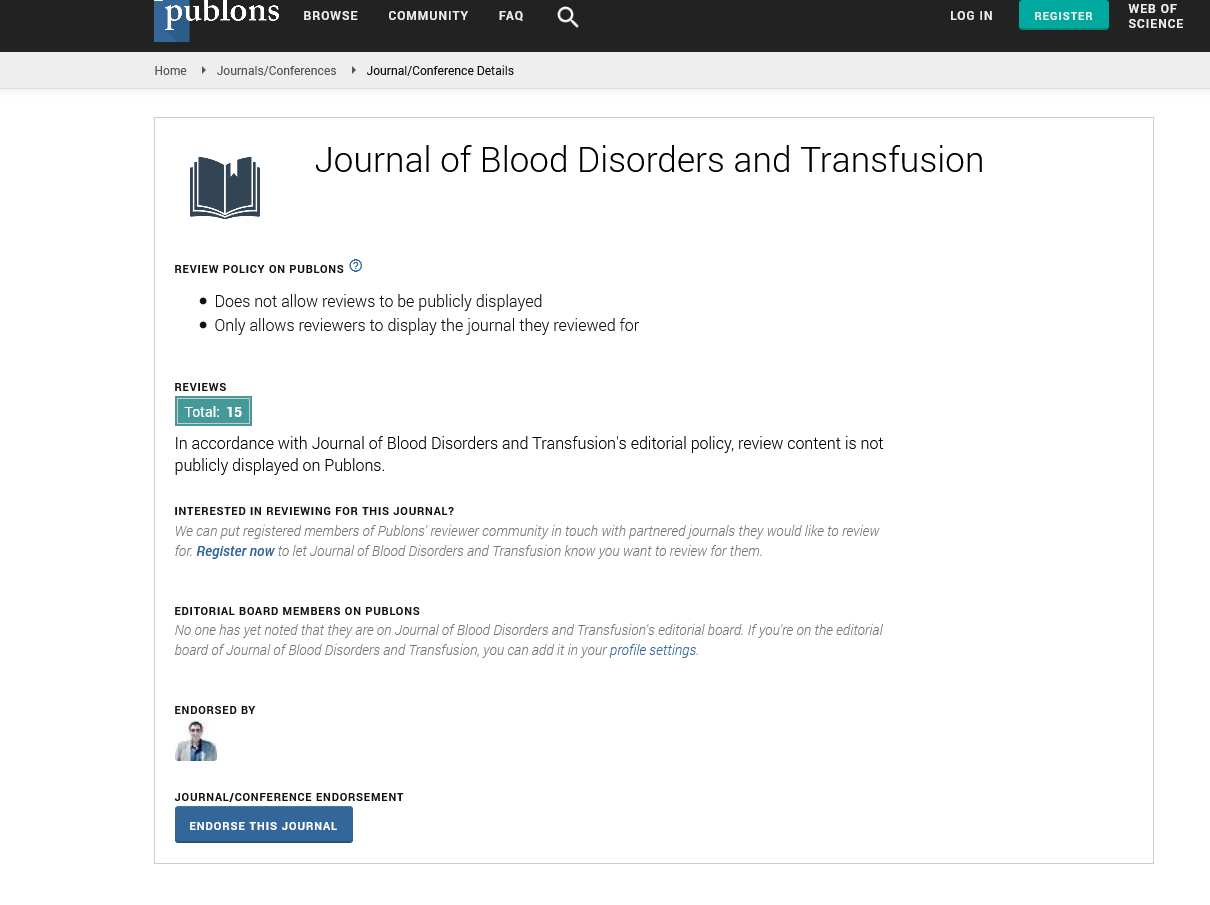Indexed In
- Open J Gate
- Genamics JournalSeek
- JournalTOCs
- Ulrich's Periodicals Directory
- RefSeek
- Hamdard University
- EBSCO A-Z
- OCLC- WorldCat
- Proquest Summons
- Publons
- Geneva Foundation for Medical Education and Research
- Euro Pub
- Google Scholar
Useful Links
Share This Page
Journal Flyer

Open Access Journals
- Agri and Aquaculture
- Biochemistry
- Bioinformatics & Systems Biology
- Business & Management
- Chemistry
- Clinical Sciences
- Engineering
- Food & Nutrition
- General Science
- Genetics & Molecular Biology
- Immunology & Microbiology
- Medical Sciences
- Neuroscience & Psychology
- Nursing & Health Care
- Pharmaceutical Sciences
Frequency of foetal haemoglobin and haemoglobin values in various haemoglobin genotypes in Calabar, Nigeria
2nd International Conference on Hematology & Blood Disorders
September 29-October 01, 2014 DoubleTree by Hilton Baltimore-BWI Airport, USA
Emmanuel Kufre Uko and M F Useh
Scientific Tracks Abstracts: J Blood Disorders Transf
Abstract:
Objectives: Anaemia is a problem of global public health importance with significant social and economic implications. The aim of this study was to determine the prevalence and the confounding socio-economic factors associated with anaemia among pregnant women in Sokoto, North Western Nigeria. Method: A total of 403 women attending antenatal clinic in Usmanu Danfodiyo University Hospital (UDUTH) in Sokoto metropolis, constituted subjects for this case- control study. Two hundred aged-matched, non-pregnant women were monitored as the controls. EDTA anti-coagulated blood was used for the determination of haematocrit and the haemoglobin concentration using the 3 part differential fully automated Swelab haematology analyzer. Socio-demographic data was obtained by the use of a questionnaire. Result: A total of 403 pregnant women aged 18-44 years with mean age of 32.32?10.60 constituted the subjects in this case- control study while 200 non-pregnant women served as the control. Their mean haematocrits and haemoglobin levels were significantly lower among pregnant subjects (29.63?3.4 and 9.7?1.1) compared to non ? pregnant controls (38.33?5.4 and 12.75?1.8) (p=0.001). Out of the 403 women, 228 (55.6%) had haemoglobin levels less than 10g/dl and therefore were classified as anaemic while 175 (43.4%) were non anaemic. The prevalence of anaemia although marginally higher among pregnant subjects in the 15-19 years age group, there were no statistically significant age ?related differences (p=0.155).The prevalence of anaemia was significantly lower among highly educated subjects compared to less educated subjects (p=0.034). Although the prevalence of anaemia was marginally higher among less-remunerated subjects, this difference was not statistically significant (p=0.678). The prevalence of anaemia was significantly higher among pregnant women in polygamous compared to monogamous relationships (p=0.01).There was no significant difference in the prevalence of anaemia based on religious affiliation of subjects (p=0.836). Anaemia was marginally more prevalent among subjects who got married at <18 years of age compared to those that married at >18 years. This difference however was not statistically significant (p=0.464). Anaemia was more prevalent among multigravidae compared to primigravidae (p=0.04) as well as among pregnant subjects with >24 months inter pregnancy intervals compared to those less than 24 months (p=0.05). Although not statistically significant, the prevalence of anaemia was higher among grand multiparous women compared to multiparous woman and primiparous subjects (p=0.157). Conclusion: This study indicates a high prevalence of anaemia among pregnant women in Sokoto, North Western Nigeria particularly in the second trimester, among younger, grand multiparous, low socioeconomic class and women with shorter inter pregnancy interval. We advocate for targeted iron supplementation for pregnant women in the area to potentially improve their iron status and reduce the incidence of anaemia. Laboratory measures of routine haemoglobin and haematocrit should be included in antenatal care protocol of pregnant women during antenatal visits to facilitate the early diagnosis, treatment and monitoring of pregnant women with anaemia. We recommend the implementation of WHO recommendation that anti- helminthic therapy be provided for pregnant women in the third trimester of pregnancy to control hookworm infection particularly in areas in which the prevalence of infection is >20?30% and anaemia is prevalent. There is also the need for the promotion of insecticide-treated bed nets (ITNs), intermittent preventive treatment (IPTp), mass media campaigns peer/ outreach education and life skill programmes to educate women on the advantages of early ANC booking.

